Huawei Technologies V830 HSDPA/UMTS/GPRS/GSM Mobile Phone with BT User Manual V730
Huawei Technologies Co.,Ltd HSDPA/UMTS/GPRS/GSM Mobile Phone with BT V730
Contents
- 1. User Manual Part 1
- 2. User Manual Part 2
User Manual Part 2

Currency Converter
25
Organiser & Tools
8
length. Select CE to clear the numeric values you
entered.
Currency Converter
You can convert a value from one currency to another
using your phone. Press the up/down scroll key to
switch between the setup items. Press to clear the
numeric values you entered.
Voice Recorder
You can record voices or sounds on your phone.
• Record/Pause: During recording, press OK key to
pause, and press OK key again to resume.
• Stop and save: During recording, press the left
function key to stop recording. The audio file is
saved in My Files\Music automatically.
• Play an audio file instantly: After recording is com-
plete, select Option > Play to play the audio file.
World Time
You can view the time of important cities around the
world. To switch among the time zones, press the left/
right scroll key.
Stopwatch
You can use the stop watch function. On the
Stopwatch screen, you can perform the following
operations: start, save, pause, continue, reset.
Timer
You can set a timer for up to 99 hours and 59 min-
utes. After you have set it, the timer is displayed on
the home screen.
Service Dial Number
You can contact your local Vodafone customer care
centre by dialing this number.
V730.book Page 25 Saturday, June 28, 2008 3:59 PM

26
9My Files
You can select My Files from the main menu. My
Files enables you to manage the Pictures, Ring-
tones, Music, Videos, Themes, and Others files con-
veniently.
Select Pictures, Ringtones, Music or Videos
folder. You can perform the following operations on
files.
•View: To view the picture file.
•Send: To send the selected file by message, MMS,
email or Bluetooth.
•Set as: To set a picture as thumbnail of a contact or
the wallpaper.
•Rename: To rename the selected file.
•Delete: To delete the selected file.
•Sort: To sort the selected file by name, by date or
by size.
•Mark/Unmark: To select one or more files or cancel
the selection.
•Advanced: To access the advanced options.
•Play: To play a selected file.
•Play via Headset: To play a selected sound file
with the Bluetooth headset.
•Set as ringtone: To set a ringtone as voice call
tone, video call tone, specific contact tone message
tone or Email tone.
Note
Some sound files are protected by Digital
Rights Management (DRM), and may not be
able to be used as a ringtone.
Select Others, Themes folder.
•Others: you can save other kind of file in this folder.
•Themes: All themes that you download are saved
in this folder.
•Memory status: To view the memory status of your
phone.
When the phone detects and recognises the memory
card, Memory card is displayed as a tab on the top
of the My Files screen.
V730.book Page 26 Saturday, June 28, 2008 3:59 PM

27
10Web
The built-in browser makes it easy to browse the
Vodafone live! portal. You can access the Browser
screen by selecting Web from the main menu.
Open homepage
On the homepage, select a link from the page. Then
press OK key to browse the page. When browsing,
you can press the scroll keys to select a link you want
to access. The selected link is highlighted. Press OK
key to access the link.
Open new page
Access the Open new page screen, and then you
can enter the address of the page to be accessed.
Bookmarks
With this option, you can save and edit the informa-
tion of the websites that you often access.
Some bookmarks have been preset by Vodafone for
you on the phone.
Settings
These are preset for you to use the Vodafone ser-
vice. If you need to modify them, open the Browser
and select Settings.
V730.book Page 27 Saturday, June 28, 2008 3:59 PM
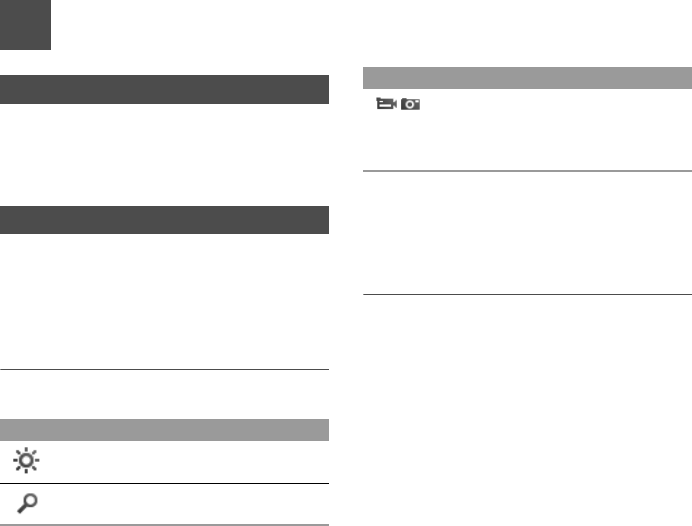
28
11Entertainment, Mobile TV, Applications
Games
In the main menu, select Entertainment > Games.
Vodafone offers a great choice of games for your
mobile phone. To download one of these to the
phone or memory card, select Download Games.
Camera/Video Camera
In the main menu, select Entertainment > Camera
to start the camera. You can also press the camera
key to start the camera.
In the camera viewfinder screen, press the right scroll
key to switch to the video camera function.
Operations in the Viewfinder Screen
In the viewfinder screen, you can:
In the viewfinder screen, select Options to display
the tool bar or select Back to close the tool bar. This
tool bar is used to set the parameters of the camera
or the video camera.
Operations After Taking a Picture
In the viewfinder screen, you can press OK key to
take a picture. Pictures taken are auto saved to the
My Files/Pictures directory.
After taking a picture, you can select left function
key for the following operations.
•Send: To send the picture through MMS, postcard,
email or Bluetooth.
•Go to gallery: To open Pictures folder in My files.
•Set as: To set the picture as the wallpaper or the
image of a contact.
•Delete: To delete the picture.
Icon Operation
Press the up/down scroll key to adjust
the brightness.
Press the volume keys to adjust the
focus.
/When the camera is started, press the
right scroll key to switch to the video
camera function (when the tool bar is
closed).
Icon Operation
V730.book Page 28 Saturday, June 28, 2008 3:59 PM

Mobile TV
29
Entertainment, Mobile TV, Applications
11
•Edit: To edit the picture.
Operations During Recording
In the video camera viewfinder screen, you can press
OK key to start recording the video.
During the recording, you can perform the following
operations.
• Pause/Continue: To pause and then to start record-
ing again.
• Cancel: To cancel the recording.
Mobile TV
Select Mobile TV from the main menu. You can
access the preset link. The link has been preset by
Vodafone for you on the phone.
Applications
Select Applications from the main menu. You can
run applications and download more applications.
Downloaded applications are saved to the Applica-
tions directory.
You may select Options to do the same operations
as those of Games.
V730.book Page 29 Saturday, June 28, 2008 3:59 PM

30
12Connections
Your phone provides you with many data communi-
cation functions. You can access the Connectivity
screen by selecting Settings from the main menu.
Note
•You phone supports plug and play function.
• The PC assistant installation programme and
USB driver are embedded in the mobile
phone.
•The Vodafone PC Options software supplied
on your phone will run automatically after you
connect your phone to the PC by using the
USB cable.
USB
You can synchronise data between your phone and
PC, surf the Internet with your phone and read the
memory card by USB cable.
!
警告
!
Warning
•To help prevent damage to your phone and
PC when using the USB Cable please follow
these guidelines. To connect your phone with
a PC through USB cable, first connect the
USB connector to your phone, and then con-
nect the other end of the cable to the PC. To
disconnect your phone from the PC, first dis-
able the Vodafone PC Assistant, then discon-
nect the USB connector from the PC, and
finally disconnect the USB cable from your
phone.
• If the PC cannot recognise your phone when
connecting through the USB cable, power off
and restart the PC and then retry.
•Please do not plug the USB cable in and out
of your phone frequently.
Synchronising your phone with PC
Assistant
Your phone supports the synchronisation requests
from a PC to your phone. With a USB cable and PC
Assistant, your phone can communicate with a PC.
To operate the USB-based synchronisation with your
phone, do as follows.
1Select Settings > Connectivity > Modem from
the main menu of your phone and set the port to
Modem via USB
2Connect the data cable to your Vodafone 830
device.
V730.book Page 30 Saturday, June 28, 2008 3:59 PM

USB
31
Connections
12
3Connect the other end of the data cable to your
PC. The USB driver is embedded in your phone.
4If the Found new hardware wizard is shown,
select Cancel: this may happen more than once.
5If asked to restart the PC, select NO.
6The Vodafone PC Options software supplied on
your phone will run automatically. Wait for the
Dialog box to appear (this may take up to 30 sec-
onds). Buttons showing PC Assistant and
Vodafone Mobile Connect via the phone
should be displayed *.
7Select the PC assistant button.
8Follow the guide to complete the PC assistant
installation for the first time.
9When this has finished, wait for modem driver to
appear in the modem list on your PC (this can be
found by clicking on start, then control panel,
then phone and modem options, then modems.
"Vodafone Mobile Adapter - 3G Modem" should
appear). It may take up to 60 seconds for this to
appear.
10 You may be asked to restart the PC. This time,
select Yes.
11 After restarting the PC, and run the PC Assis-
tant on PC. Now you can operate the USB-
based synchronisation.
For details of the operation, refer to the Help of
the PC Assistant.
Synchronising your phone with Win-
dows Media Player
Your phone supports the synchronisation requests
between Windows Media Player 11 and your phone.
With a USB cable and MTP Transfer, your phone can
communicate with a Windows Media Player 11.
You need to install the Windows Media Player 11
before using this function. Then, do as follows.
1Connect your phone to the PC by using the USB
cable.
V730.book Page 31 Saturday, June 28, 2008 3:59 PM

USB
32
2The Vodafone PC Options software supplied on
your phone will run automatically. And then
select MTP Transfer on PC.
3Select Yes on your phone to switch to the MTP
mode.
4Start the Windows Media Player 11, and you can
synchronize files and playlists between the PC
and mobile phone.
Note
Windows XP, Windows XP SP2 and Windows
Vista are supported.
Accessing the Internet by USB
Connecting your phone to the PC with the USB cable
enables the PC to use the phone as a modem. This
helps to set up a dial-up connection to the Internet.
There are two methods to access the internet by
using the USB cable: use the Vodafone PC Assistant
supplied with your Vodafone 830 to load and run the
Vodafone Mobile Connect via the phone internet con-
nectivity software, or use the Windows operating sys-
tem to set the service.
Only Windows 2000, Windows XP and Windows
Vista are supported.
How to connect to the Internet via "Vodafone
Mobile Connect via the phone":
1Select Settings > Connectivity > Modem from
the main menu of your phone and set the port to
Modem via USB.
2Connect the data cable to your Vodafone 830
device.
3Connect the other end of the data cable to your
PC.
4Wait for the Dialog box to appear (this may take
up to 30 seconds). Buttons showing PC Assis-
tant and Vodafone Mobile Connect via the
phone should be displayed *.
5Select Vodafone Mobile Connect via the
phone button.
6Follow the prompts.
7When this has finished, wait for modem driver to
appear in the modem list on your PC (this can be
V730.book Page 32 Saturday, June 28, 2008 3:59 PM

Bluetooth®
33
Connections
12
found by clicking on start, then control panel,
then phone and modem options, then modems.
"Vodafone Mobile Adapter - 3G Modem" should
appear). It may take up to 60 seconds for this to
appear.
8You may be asked to restart the PC. This time,
select Yes.
9After restarting the PC, the Vodafone Mobile
Connect via the phone should be ready to use.
Note
* If the dialog box does not appear in step 4,
please disconnect the cable from the PC and
then the Vodafone 830. Then reconnect the
cable to the Vodafone 830 and then the PC.
The dialog box should appear after this activity.
If the dialog box still does not appear, please
disconnect and reconnect the cable as above
using a different USB port on the PC. Once the
dialog box appears, continue from step (5).
micro-SD Card Reader
You can read the files saved in the micro-SD card by
using a USB cable.
To use the micro-SD card reader, do as follows.
1Insert the micro-SD card to your phone.
2Connect your phone to the PC by using the USB
cable.
3Found New Hardware is displayed on your PC,
and an icon for the mobile memory drive
appears.
4The Vodafone PC Options software supplied on
your phone will run automatically. And then
select File Transfer.
You can read the files saved in the micro-SD
card directly.
Note
The function of micro-SD card reader and the
other functions using the USB cable are
incompatible. If you enable the micro-SD card
reader, other functions using the USB
cable are unavailable.
Bluetooth®
You may use the built-in Bluetooth function of your
phone to synchronise data between a PC and your
V730.book Page 33 Saturday, June 28, 2008 3:59 PM

Bluetooth®
34
phone, or use the built-in modem of your phone to
access the Internet with a PC, or exchange data with
other Bluetooth devices. You can also talk by using
the Bluetooth headset or Bluetooth loudspeaker.
Note
The Bluetooth function supported by your
Phone meets the requirements of Bluetooth
Specification 1.2. It can work successfully only
if you use it with compatible Bluetooth devices.
For more information, refer to the user manuals
of related devices, or consult the manufacturer
of related devices.
Bluetooth-Based Synchronisation
Your phone can respond to data synchronisation
requests from a PC. To operate the Bluetooth syn-
chronisation with your phone, your PC needs to sup-
port Bluetooth function.
1Install the PC Assistant supplied on your phone.
2Select Settings > Connectivity > Bluetooth >
Switch On/Off > On to enable the Bluetooth
function.
3Run the driver software for Bluetooth on the PC,
and pair the phone. After the PC detects and
recognises the Vodafone 830 serial port service,
activate the Bluetooth serial port service on the
phone.
4Run the PC Assistant on the PC.
5You can now operate the synchronisation. For
details of the operation, refer to the Help of the
PC Assistant.
Bluetooth-Based Data Transfer
You can exchange data between your Bluetooth
phone and other Bluetooth devices. If you want to
exchange data between your phone and another
device, that device must support Bluetooth and the
Bluetooth function must be enabled.
1Select Switch On/Off > On from the Bluetooth
settings list to enable the Bluetooth device.
2Select Devices from the Bluetooth settings list.
Select Search to search a Bluetooth device.
V730.book Page 34 Saturday, June 28, 2008 3:59 PM

Bluetooth®
35
Connections
12
When a Bluetooth device is found for the first
time, authentication is required.
Now you can exchange data between your phone
and the other Bluetooth device.
Bluetooth-Based Internet Access
Connecting your phone to a PC through Bluetooth
function enables the PC to use the phone as a
modem. This helps to set up a dial-up connection to
the Internet. (This is particularly useful for laptop.)
You can create Bluetooth-based Internet access
through the PC Assistant supplied with your phone,
or the built-in Internet wizard of the Windows operat-
ing system, or the Internet wizard supplied with the
Bluetooth drive suite of the PC.
Note
Windows 2000, Windows XP and Windows
Vista are supported.
◆ Accessing the Internet using the Vodafone
Mobile Phone PC Assistant
To access the Internet by Bluetooth using the PC
Assistant, make sure that your PC supports the Blue-
tooth function and your SIM card supports the Inter-
net access service.
1Select Settings > Connectivity > Modem and
set the port to Modem via Bluetooth.
2Select Settings > Connectivity > Bluetooth >
Switch On/Off > On.
3Make sure that Bluetooth modem is in Device
Manager/Modem of your PC. Run the driver
program for Bluetooth on your PC, and then pair
the Vodafone 830 phone. After the PC has
detected the Vodafone dial-up network service,
you can activate this service.
4Install the PC Assistant supplied with your
phone.
5Run the Vodafone Dialup Internet on the PC to
access the Internet.
◆ Other Bluetooth Operations
You can perform the basic settings for the Bluetooth
functions.
Select Settings > Connectivity > Bluetooth for the
following operations.
V730.book Page 35 Saturday, June 28, 2008 3:59 PM

Bluetooth®
36
•Switch On/Off: To set the Bluetooth device to On
or Off. Bluetooth shall be turned off as default.
Turning Bluetooth on shall NOT automatically set
the state as being discoverable.
•My devices: To view all detected Bluetooth
devices. Or to search for new Bluetooth devices.
•Visibility: To set whether your phone can be found
by other devices when the Bluetooth function is
enabled. Bluetooth shall be set to non-discoverable
as default.
•Device name: To rename your phone.
•My device information: To view the detailed infor-
mation of your phone.
V730.book Page 36 Saturday, June 28, 2008 3:59 PM

37
13Settings
You can access the Settings screen by selecting Set-
tings from the main menu.
Phone settings
You can change the settings of the phone.
•Date and Time: To set the system date and time
format of the phone. If you have removed the bat-
tery from the mobile phone, you may need set the
time after switching on the mobile phone.
•Profiles: To select different profiles for the phone to
suit different environmental situations.
•Phone language: To set the phone language. you
can select Auto. This option is used to set the
phone language to be the same as that used in
your SIM card.
•Input language: To set the language used to enter
text.
•Sound: To change the settings for the current pro-
file. You can also select Phone settings > Profiles
to set the sounds for the phone.
•Keypad tone: To set the keypad tone of the phone.
•Keypad lock period: You can set the keypad lock
period. If there is no operation on the phone within
a preset period of time, the keypad is locked auto-
matically. You can press left function key and right
function key in turn to unlock the keypad.
•Shortcuts: To assign the frequently used functions
to the scroll keys as shortcut keys.
•Auto On and OFF: To set your phone to power on
or off automatically.
Note
In the standby mode, you can press and hold
to switch the current profile to the silent pro-
file. If the current profile is offline, you cannot
use this function.
Display settings
You can change the settings for the phone display.
•Wallpaper: To set the wallpaper layout for the
home screen.
•Themes: To set the theme of the phone.
•Brightness: To set the brightness of the screen.
•Keypad backlight: To turn the keypad backlight on
or off.
•Backlight time: To set the backlight delay time for
the screen.
V730.book Page 37 Saturday, June 28, 2008 3:59 PM

Message settings
38
•Intermittently alert: To turn the alert on or off.
•Greeting message: To enter a greeting message
that appears on the screen when you power on
your phone.
•Goodbye message: To enter a message that
appears on the screen when you power off your
phone.
Message settings
You can change the message settings including SMS
& MMS, Email, Push messages, Broadcast, and
Common phrases. For detailed information, refer to
"Messaging, Email" on page 17.
Call settings
You can change the settings for making calls.
Call forwarding
This option is used to forward incoming calls.
1In the main screen, select Settings > Call set-
tings > Call forwarding.
2Select the forwarding condition from All calls, If
unreachable, If busy, and If unanswered.
3Then select the forwarding type from Voice call,
Fax call, Data and Video call and All services.
4Select Options > Activate/Deactivate to enable
or disable the service. You can also select
Check status to check the status of call forward-
ing service.
Call barring
This option is used to set the call barring mode for the
phone.
Select Call settings > Call barring for the following
options:
◆ Call barring:
1Select the barring condition from All outgoing
calls, Intl. calls, Intl. calls except home, All
incoming calls, and Incoming calls when
abroad.
2Then select the barring type from Voice call,
Fax call, Data and Video call, and All services.
V730.book Page 38 Saturday, June 28, 2008 3:59 PM
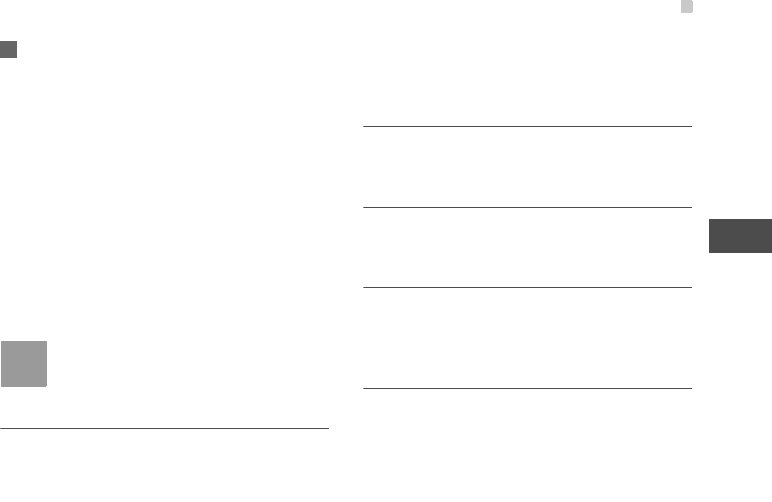
Call settings
39
Settings
13
3Select Options > Activate/Deactivate to enable
or disable the service. You can also select
Check status to check the status of call barring
service.
◆ Disable All
Select one type from Voice call, Fax call, Data and
video call and All services, and then enter the call
barring password. Press OK key to cancel all call bar-
ring services of each type.
◆ Call barring password
This function is used to change the password for call
barring. Select Call barring password from the Call
barring screen. Then you can change the call barring
password.
Note
The old call barring password is provided by
your network operator if it is the first time for
you to change the password.
Call waiting
This option is used to enable or disable the call wait-
ing function. You can also view whether the call wait-
ing function is enabled by checking the status.
The call waiting function is network-dependent. For
more information, contact your local Vodafone cus-
tomer care centre.
Save unknown number
This function is used to prompt whether to save the
number after a call ends.
Auto redial
This function is used to auto redial the dialed number
if the dialing failed.
Answer mode
It is used to set the mode for answering an incoming
call. Three options are available: Any key, Send key
and Slide up.
Auto Answer
This option is used to select auto answering for
incoming calls. Four options are available: Immedi-
ate answer, Text message, Recorded voice and
Disable.
V730.book Page 39 Saturday, June 28, 2008 3:59 PM

Video call
40
Caller ID
This options allows you to select whether to display
your phone number on the phone of the party who
you called. If select Auto, whether your phone num-
ber will be shown on the called phone depends on
the network.
Select line
This option is used to set the call line for your phone.
Two options are available: Line 1 and Line 2.
My number
This function can be used to save your own phone
numbers on the SIM card. You can select Options to
edit or delete the records.
Video call
You can change the settings for the Video Call func-
tion.
•Picture mode: To set the picture mode during a
video call.
•Image quality: To set the image quality for video.
•Switch Camera off: To open or close the video
channel during a video call.
•Audio off: To open or close the audio channel dur-
ing a video call.
•Auto voice call: To enable the auto voice call
function. The phone auto makes a voice call, when
the other party's phone does not support the video
call service.
•Send image: To select a file and send it to the other
party when you hold a video call.
•Auto answer: To auto answer an incoming video
call. You can enable or disable this function.
Contact settings
This option is used to set the default contact list
displayed in the contact screen, to sort the contacts
on the Contacts screen.
Connectivity
The data connection function provides several data
communication functions. You can synchronise data
between your phone and a PC through a USB cable
V730.book Page 40 Saturday, June 28, 2008 3:59 PM
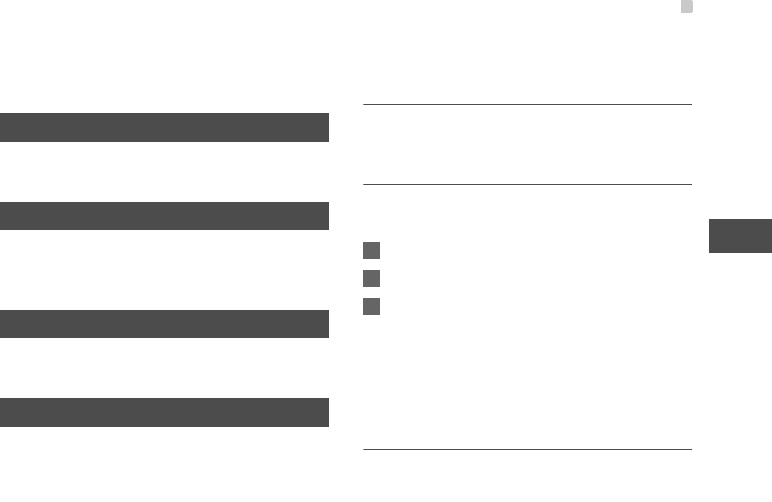
Device management
41
Settings
13
or Bluetooth. Your PC can use the built-in modem of
your phone to access the Internet. For detailed infor-
mation, refer to "Connections" on page 31.
Device management
You can synchronise your device settings with net-
work server in the Vodafone network.
Network
You can change the settings for the network. Four
options are available: Mode, Select network, Cell
information, and Operator list.
JavaTM settings
This option is used to set the volume and vibration of
games.
Security
You can change the settings related to the phone
security.
Select Security from Settings to display the follow-
ing security setting items.
Reset settings
This option is used to reset your phone to the factory
settings.
Password lock
This option is used to enable or disable the "Phone
lock" and "PIN lock".
1Select Security > Password lock.
2Select one item from Phone lock and PIN lock.
3Press the up/down scroll key to select On or Off.
•Phone lock: Enter the phone password.
•PIN lock: If the desired status is the same as
the current status, just press OK key. Con-
versely, you need to select the desired status
and then enter the PIN code.
Change password
You can modify the phone password and PIN code.
V730.book Page 41 Saturday, June 28, 2008 3:59 PM

DRM settings
42
1Select Security > Change password.
2Select one item from Phone password, PIN
code, and PIN2 code.
3Enter the old password (The initial phone pass-
word of the Vodafone 830 is 0000).
4Enter a new password.
5Enter the new password again to confirm.
Note
•To modify the PIN code, you must set the
"PIN locked" to "On" first.
• If you enter the wrong PIN or PIN2 three
times, the SIM card is locked. You need the
PUK or PUK2 code to unlock the SIM card. If
you enter the wrong PUK or PUK2 code 10
times in total, the SIM card is locked perma-
nently.
•PUK or PUK2 code are delivered with the
SIM card. If you have not received one or
have forgotten it, contact your local Vodafone
customer care centre.
Fixed dialer number
If your SIM card supports the Fixed Dialer Num-
ber(FDN) function, you can set the limit for phone
numbers.
Select Security > Fixed dialer number for the fol-
lowing options.
•Deactivated / Activated: To disable or enable the
FDN function, you need to enter the correct PIN2
code.
•My Fixed Dial Numbers: To create, edit or delete
the fixed dialer numbers, you need to enter the cor-
rect PIN2 code.
DRM settings
Digital Rights Management (DRM) can protect the
digital content from piracy and protect the provider’s
interests. The digital content includes JavaTM applica-
tions and multimedia content such as images, audio
and video. If the protected content cannot be
accessed, it indicates that the corresponding copy-
right is overdue or used up.
V730.book Page 42 Saturday, June 28, 2008 3:59 PM

Streaming settings
43
Settings
13
Select Settings > DRM settings. Enter the correct
phone password and press OK key to confirm, and
you can delete all the rights.
Streaming settings
You can change the settings for the Streaming.
V730.book Page 43 Saturday, June 28, 2008 3:59 PM
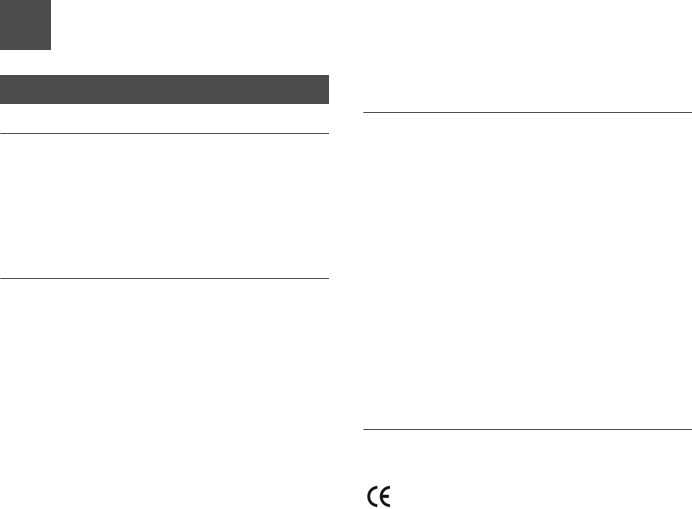
44
14Warnings and Precautions
RF Exposure
General Statement on RF energy
Your phone contains a transmitter and a receiver.
When it is ON, it receives and transmits RF energy.
When you communicate with your phone, the system
handling your call controls the power level at which
your phone transmits.
Body worn operation
Important safety information regarding radio
frequency radiation (RF) exposure.
To ensure compliance with RF exposure guidelines
the phone must be used with a minimum of 1.5 cm
(0.6 inch) separation from the body.
Failure to observe these instructions could result in
your RF exposure exceeding the relevant guideline
limits.
Limiting exposure to radio frequency
(RF) fields
For individuals concerned about limiting their
exposure to RF fields, the World Health Organisation
(WHO) provides the following advice:
Precautionary measures: Present scientific informa-
tion does not indicate the need for any special pre-
cautions for the use of mobile phones. If individuals
are concerned, they might choose to limit their own or
their children's RF exposure by limiting the length of
calls, or using 'hands-free' devices to keep mobile
phones away from the head and body.
Further information on this subject can be obtained
from the WHO home page http://www.who.int/peh-
emf WHO Fact sheet 193: June 2000.
Regulatory information
The following approvals and notices apply in specific
regions as noted.
EU Declaration of Conformity
V730.book Page 44 Saturday, June 28, 2008 3:59 PM

RF Exposure
45
14
Warnings and Precautions
according to the Radio Equipment and Telecommuni-
cations Terminal Equipment Directive 1999/5/EC
For the following equipment
Product: WCDMA/GPRS/GSM Mobile Phone With
Bluetooth
Type Designation/Trademark: V830/VODFONE;
Vodafone 830/VODAFONE
Manufacturer's Name: Huawei Technologies Co.,Ltd.
Manufacturer's Address: Bantian, Longgang District,
Shenzhen, 518129, Guangdong, P. R. China.
is herewith confirmed to comply with the require-
ments set out in the Council Directive1999/5/EC for
radio equipment and telecommunications terminal
equipment. For the evaluation of the compliance with
this Directive, the following standards were applied:
Safety: EN 60950-1:2001 First Edition+A11:2004
Health: EN 50360:2001; EN 50361:2001;
EMC: EN 301 489-1 V1.6.1; EN 301 489-24 V1.3.1;
EN 301489-7 1.3.1; EN 301489-17 1.2.1;
Radio: EN 301 511 V9.0.2; EN 301 908-1 V2.2.1; EN
301 908-2 V2.2.1; EN 300 328 V1.7.1;
Responsible for making this declaration is the: Manu-
facturer.

RF Exposure
46
FCC Statement
This equipment has been tested and found to comply
with the limits for a Class B digital device, pursuant to
Part 15 of the FCC Rules. These limits are designed
to provide reasonable protection against harmful
interference in a residential installation. This equip-
ment generates, uses and can radiate radio fre-
quency energy and, if not installed and used in
accordance with the instructions, may cause harmful
interference to radio communications. However,
there is no guarantee that interference will not occur
in a particular installation. If this equipment does
cause harmful interference to radio or television
reception, which can be determined by turning the
equipment off and on, the user is encouraged to try to
correct the interference by one or more of the follow-
ing measures:
• Reorient or relocate the receiving antenna.
• Increase the separation between the equipment
and receiver.
• Connect the equipment into an outlet on a circuit
different from that to which the receiver is con-
nected.
• Consult the dealer or an experienced radio/TV
technician for help.
This device complies with Part 15 of the FCC Rules
and with RSS-210 of Industry Canada.
Operation is subject to the following two conditions:
(1) This device may not cause harmful interference,
and
(2) This device must accept any interference
received, including interference that may cause
undesired operation.
Warning: Changes or modifications made to this
equipment not expressly approved by HUAWEI may
void the FCC authorization to operate this equipment.
V730.book Page 46 Saturday, June 28, 2008 3:59 PM

Distraction
47
14
Warnings and Precautions
Distraction
Driving
Full attention must be given to driving at all times in
order to reduce the risk of an accident. Using a phone
while driving (even with a hands free kit) causes
distraction and can lead to an accident. You must
comply with local laws and regulations restricting the
use of wireless devices while driving.
Operating machinery
Full attention must be given to operating the
machinery in order to reduce the risk of an accident.
Product Handling
General Statement on handling and
use
You alone are responsible for how you use your
phone and any consequences of its use.
You must always switch off your phone whenever the
use of a phone is prohibited. Use of your phone is
subject to safety measures designed to protect users
and their environment.
• Always treat your phone and its accessories with
care and keep it in an clean and dust-free place.
• Do not expose your phone or its accessories to
open flames or lit tobacco products.
• Do not expose your phone or its accessories to
liquid, moisture or high humidity.
• Do not drop, throw or try to bend your phone or its
accessories.
• Do not use harsh chemicals, cleaning solvents, or
aerosols to clean the device or its accessories.
• Do not paint your phone or its accessories.
• Do not attempt to disassemble your phone or its
accessories, only authorised personnel must do so.
• Do not expose your phone or its accessories to
extreme temperatures, minimum - 40 and
maximum + 70 degrees Celsius.
• Please check local regulations for disposal of
electronic products.
V730.book Page 47 Saturday, June 28, 2008 3:59 PM
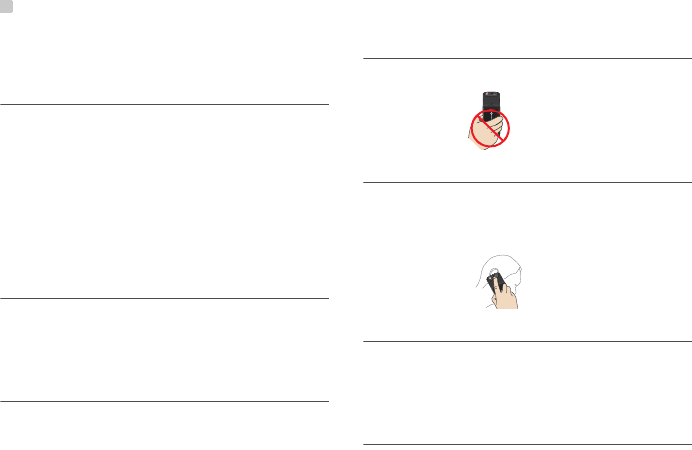
Product Handling
48
Do not carry your phone in your back pocket as it
could break when you sit down.
Small children
Do not leave your phone or its accessories within the
reach of small children or allow them to play with it.
They could hurt themselves or others, or could
accidentally damage the phone.
Your phone contains small parts with sharp edges
that may cause an injury or which could become
detached and create a choking hazard.
Demagnetisation
To avoid the risk of demagnetisation, do not allow
electronic devices or magnetic media close to your
phone for a long time.
Electrostatic discharge (ESD)
Do not touch the SIM card's metal connectors.
Antenna
Do not touch the antenna unnecessarily.
Normal use position
When placing or receiving a phone call, hold your
phone to your ear, with the bottom towards your
mouth or as you would a fixed line phone.
Air bags
Do not place a phone in the area over an air bag or in
the air bag deployment area. Store the phone safely
before driving your vehicle.
Seizures/Blackouts
The phone is capable of producing bright flashing
lights.
V730.book Page 48 Saturday, June 28, 2008 3:59 PM
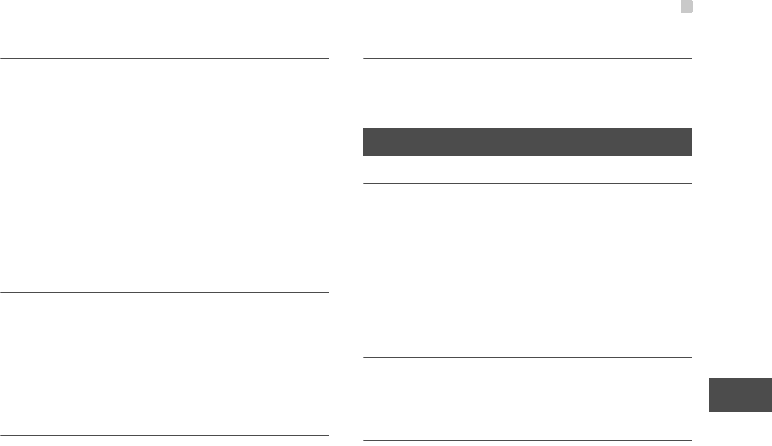
Electrical safety
49
14
Warnings and Precautions
Repetitive Motion Injuries
To minimise the risk of RSI, when texting or playing
games with your phone:
• Do not grip the phone too tightly.
• Press the buttons lightly.
• Make use of the special features in the handset
which minimise the number of buttons which have
to be pressed, such as message templates and
predictive text.
• Take lots of breaks to stretch and relax.
Emergency calls
The phone, like any wireless phone, operates using
radio signals, which cannot guarantee connection in
all conditions. Therefore, you must never rely solely
on any wireless phone for emergency
communications.
Loud noise
This phone is capable of producing loud noises which
may damage your hearing.
Phone heating
Your phone may become warm during charging and
during normal use.
Electrical safety
Accessories
Use only approved accessories.
Do not connect with incompatible products or
accessories.
Take care not to touch or allow metal objects, such as
coins or key rings, to contact or short-circuit the
battery terminals.
Connection to a Car
Seek professional advice when connecting a phone
interface to the vehicle electrical system.
Faulty and Damaged Products
Do not attempt to disassemble the phone or its
accessories.
V730.book Page 49 Saturday, June 28, 2008 3:59 PM
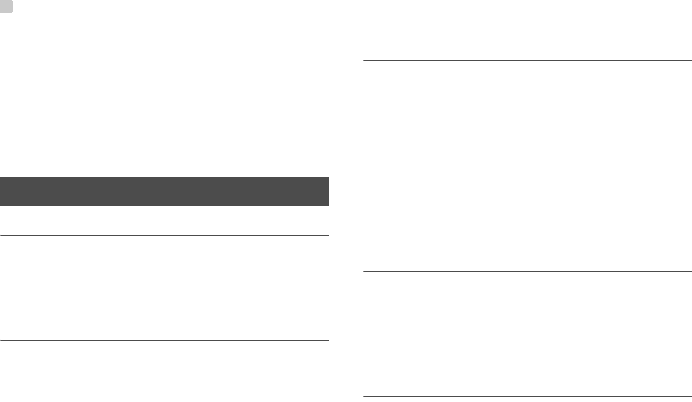
Interference
50
Only qualified personnel must service or repair the
phone or its accessories.
If your phone or its accessory has been submerged in
water, punctured, or subjected to a severe fall, do not
use it until you have taken it to be checked at an
authorised service centre.
Interference
General statement on interference
Care must be taken when using the phone in close
proximity to personal medical devices, such as
pacemakers and hearing aids.
Pacemakers
Pacemaker manufactures recommend that a
minimum separation of 15 cm be maintained between
a mobile phone and a pacemaker to avoid potential
interference with the pacemaker. To achieve this use
the phone on the opposite ear to your pacemaker
and do not carry it in a breast pocket.
Hearing Aids
People with hearing aids or other cochlear implants
may experience interfering noises when using
wireless devices or when one is nearby.
The level of interference will depend on the type of
hearing device and the distance from the interference
source, increasing the separation between them may
reduce the interference. You may also consult your
hearing aid manufacturer to discuss alternatives.
Medical devices
Please consult your doctor and the device
manufacturer to determine if operation of your phone
may interfere with the operation of your medical
device.
Hospitals
Switch off your wireless device when requested to do
so in hospitals, clinics or health care facilities. These
requests are designed to prevent possible
interference with sensitive medical equipment.
V730.book Page 50 Saturday, June 28, 2008 3:59 PM

Explosive environments
51
14
Warnings and Precautions
Aircraft
Switch off your wireless device whenever you are
instructed to do so by airport or airline staff.
Consult the airline staff about the use of wireless
devices on board the aircraft, if your device offers a
'flight mode' this must be enabled prior to boarding an
aircraft.
Interference in cars
Please note that because of possible interference to
electronic equipment, some vehicle manufacturers
forbid the use of mobile phones in their vehicles
unless a handsfree kit with an external antenna is
included in the installation.
Explosive environments
Petrol stations and explosive
atmospheres
In locations with potentially explosive atmospheres,
obey all posted signs to turn off wireless devices such
as your phone or other radio equipment.
Areas with potentially explosive atmospheres include
fuelling areas, below decks on boats, fuel or chemical
transfer or storage facilities, areas where the air
contains chemicals or particles, such as grain, dust,
or metal powders.
Blasting Caps and Areas
Turn off your mobile phone or wireless device when
in a blasting area or in areas posted turn off 'two-way
radios' or 'electronic devices' to avoid interfering with
blasting operations.
Environmental Protection
Please observe the local regulations regarding the
disposal of your packaging materials, exhausted bat-
tery and old phone and please promote their recy-
cling. Do not dispose of an exhausted battery or old
phone in municipal waste.
: This symbol indicates that the equipment carry-
ing this mark must NOT be thrown into general waste
but should be collected separately and properly recy-
cled under local regulations.
V730.book Page 51 Saturday, June 28, 2008 3:59 PM

52
15Acronyms and Abbreviations
DRM Digital Rights Management
FDN Fixed Dial Number
GPRS General Packet Radio Service
GSM Global System for Mobile communica-
tion
OTA Over-The-Air
PIN Personal Identification Number
PLMN Public Land Mobile Network
PUK PIN Unblocking Key
SD Secure Digital Card
SAR Specific Absorption Rate
STK SIM Tool Kit
URL Universal Resource Locator
USB Universal Serial Bus
WAP Wireless Application Protocol
WCDMA Wideband Code Division Multiple
Access
V730.book Page 52 Saturday, June 28, 2008 3:59 PM
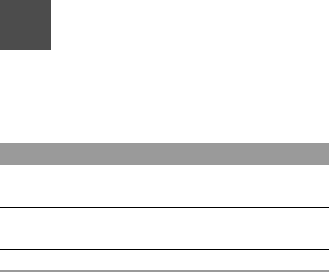
53
16Appendix
The Vodafone 830 supports image files, video files
and audio files of many formats. For details, see the
following table.
File type Formats
Image JPG, PNG, BMP, GIF, BCI, WBMP, SVG,
and SVGZ.
Audio MP3, AAC/AAC+, AMR, MID, WAV
(ADPCM), MMF, QCP, and XMF/DLS.
Video 3GP,MP4, 3G2, and PMD.
V730.book Page 53 Saturday, June 28, 2008 3:59 PM